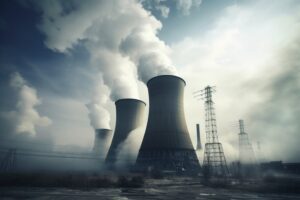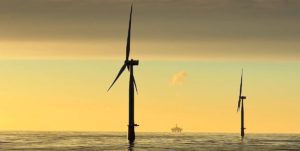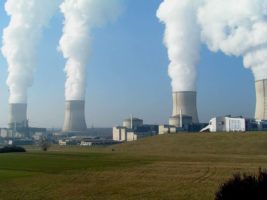The World Nuclear Industry Status Report 2021 (WNISR) was released overnight. For nearly 30 years, these reports have provided important factual antidotes to industry promotion and obfuscation.
This year’s report is the work of 13 interdisciplinary experts from across the world. Naoto Kan, Japan’s Prime Minister at the time of the Fukushima disaster, writes in the foreword:
“As Prime Minister of Japan at the time of the disaster, I now believe that the time has come for Japan and the world to end its reliance on nuclear power. To this end, I am currently involved with various projects, working alongside my like-minded predecessor Junichiro Koizumi.
“Around once a year, I still visit the remains of the Fukushima Daiichi site. Even though ten years have passed, progress in the decommissioning process remains frustratingly slow, driving home to me the importance of avoiding any repeat of such an event. The large quantities of radioactive debris that remain within the stricken reactors continue to release alarming levels of radiation. We already know from the example of Chernobyl that the timescale needed for this nuclear waste to drop to safe radioactivity levels will be measured in terms of centuries.”
Ageing reactors
In broad terms,
nuclear power has been stagnant for 30 years. WNISR notes that the world’s fleet of 415 power reactors is 23 fewer than the 2002 peak of 438, but nuclear capacity and generation have marginally increased due to uprating and larger reactors being built.
There is one big difference with the situation 30 years ago: the reactor fleet was young then, now it is old.
The ageing of the reactor fleet is a huge problem for the industry (as is the ageing of the nuclear workforce ‒the silver tsunami). The average age of the world’s reactor fleet continues to rise, and by mid-2021 reached 30.9 years. The mean age of the 23 reactors shut down between 2016 and 2020 was 42.6 years.
The International Atomic Energy Agency anticipates the closure of around 10 reactors or 10 gigawatts (GW) per year over the next three decades. Reactor construction starts need to match closures just for the industry to maintain its 30-year pattern of stagnation. But construction starts have averaged only 4.8 per year over the past five years, and there’s no indication of looming growth.
Over the past decade, the average time between reactor construction start and grid connection has been 10 years. (In Australia, were it to be considered, another 10 years would be required for planning and approvals.)
From 2001-2020, there were 95 reactor startups and 98 closures around the world. There were 47 startups and no closures in China, while in the rest of the world there were 48 startups and 98 closures.
As of mid-2021, 53 power reactors were under construction, 16 fewer than in 2013 and far fewer than the peak of 234 in 1979.
Renewables comparison
Nuclear power’s contribution to global electricity supply has fallen from a peak of 17.5 percent in 1996 to 10.1 percent in 2020 (a 4.3 percent share of global commercial primary energy consumption).
Renewables reached an estimated 29 percent share of global electricity generation in 2020, a record share. Non-hydro renewables (10.7 percent in 2020) overtook nuclear in 2019 and the gap grew in 2020.
Total investment in new renewable electricity exceeded US$300 billion in 2020, including US$142 billion investment in wind and US$149 billion in solar. Investment in renewables was 17 times greater than nuclear investment of around US$18 billion.
In 2020, a record 256 GW of renewable capacity were added to the world’s power grids including 111 GW of wind and 127 GW of solar. There was a net gain of 0.4 GW of nuclear capacity in 2020.
Despite the marginal increase in nuclear capacity in 2020, nuclear generation fell by 3.9 percent. That compares to a 21 percent increase in solar generation, and 12 percent for wind power.
Since 2009, levelised cost estimates for utility-scale solar dropped by 90 percent, wind by 70 percent, while nuclear costs increased by 33 percent.
Despite the hype, China’s nuclear program is modest: 2 GW of new nuclear capacity added in 2020 compared to 72 GW of wind, 48 GW of solar PV and 13 GW of hydro. Solar and wind combined generated twice as much electricity as nuclear in China in 2020.
In India, wind and solar generation combined was more than three times greater than nuclear generation in 2020.
In the European Union, renewable power generation (38 percent) overtook fossil fuels (37 percent) in 2020 while nuclear power accounted for 25 percent. Last year was the first year that non-hydro renewables generated more power than nuclear in the EU.
In the US, renewable generation in 2020 was 12 percent of the total compared to 20 percent for nuclear. The gap is closing fast due to the growth of renewables and the slow but steady closure of ageing reactors (the average age is over 40).
Last year, nuclear generation in the US declined by 3.6 percent to the lowest level since 2012 while wind increased by 14 percent and solar by 22 percent.
France’s nuclear generation fell by 12 per cent in 2020, WNISR notes, to the lowest level in 27 years. With debt-laden utilities, huge liabilities for decommissioning and waste management, an ageing reactor fleet, and catastrophic cost increases for new reactors, the situation is bleak.
Criminality
In addition to a vast amount of energy data, WNISR includes detailed analyses of the Fukushima and Chernobyl disasters; the vulnerabilities of nuclear power to the impacts of climate change (e.g. dwindling and warming water resources, storm impacts, sea-level rise, etc.); and a chapter on nuclear decommissioning.
WNISR details the slow and unsteady progress of small modular reactors. The report notes that “so-called advanced reactors of various designs, including so-called Small Modular Reactors (SMRs), make a lot of noise in the media but their promoters have provided little evidence for any implementation scheme before a decade at the very least.”
WNISR notes that previous reports have covered irregularities, fraud, counterfeiting, corruption, and other criminal activities in the nuclear sector. This year’s report dedicates a chapter to nuclear criminality and includes 14 case studies with serious implications (safety, public governance) that came to trial in the period 2010-2020.
The report states:
“A stunning number of revelations in recent years on irregularities, fraud, counterfeiting, bribery, corruption, sabotage, theft, and other criminal activities in the nuclear industry in various countries suggest that there is a systemic issue of “criminal energy” in the sector. …
“Although not comprehensive, this analysis offers several noteworthy insights:
* Criminal activities in the nuclear sector are not new. Some major scandals date back decades or have been ongoing for decades.
* Organized crime organizations have been supplying workers to nuclear sites — e.g. the Yakuza in Japan — for over a decade.
* Serious insider sabotage has hit major nuclear countries in recent years — like a Belgian nuclear power plant — without ever leading to arrests.
* There is no systematic, comprehensive, public database on the issue.
* In 2019, the IAEA released a report on cases of counterfeit or fraudulent items in at least seven countries since at least the 1990s.
* In Transparency International’s 2020 Corruption Perceptions Index about half of the 35 countries operating or constructing nuclear power plants on their territory rate under 50 out of 100.
* In the Bribery Payers Index (BPI, last published in 2011), seven out of the ten worst rated
countries operate or are building nuclear power plants on their territory.”
Author: Dr. Jim Green is the national nuclear campaigner with Friends of the Earth Australia










